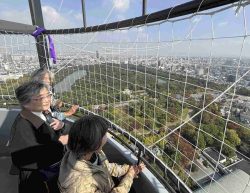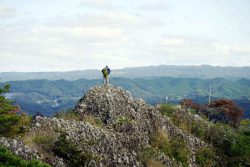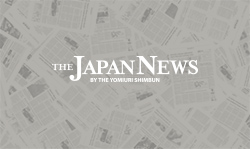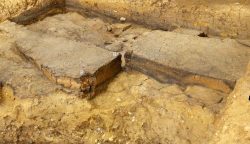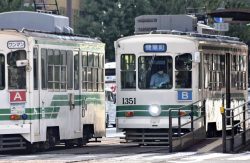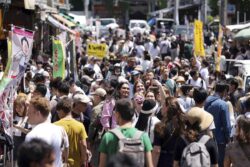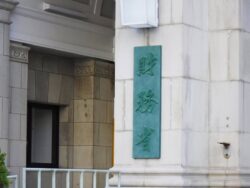Japan Tourism: Wakasa Railway in Tottori Pref. Evokes Showa Era, with 23 Facilities Built around Time of Its Opening in 1930
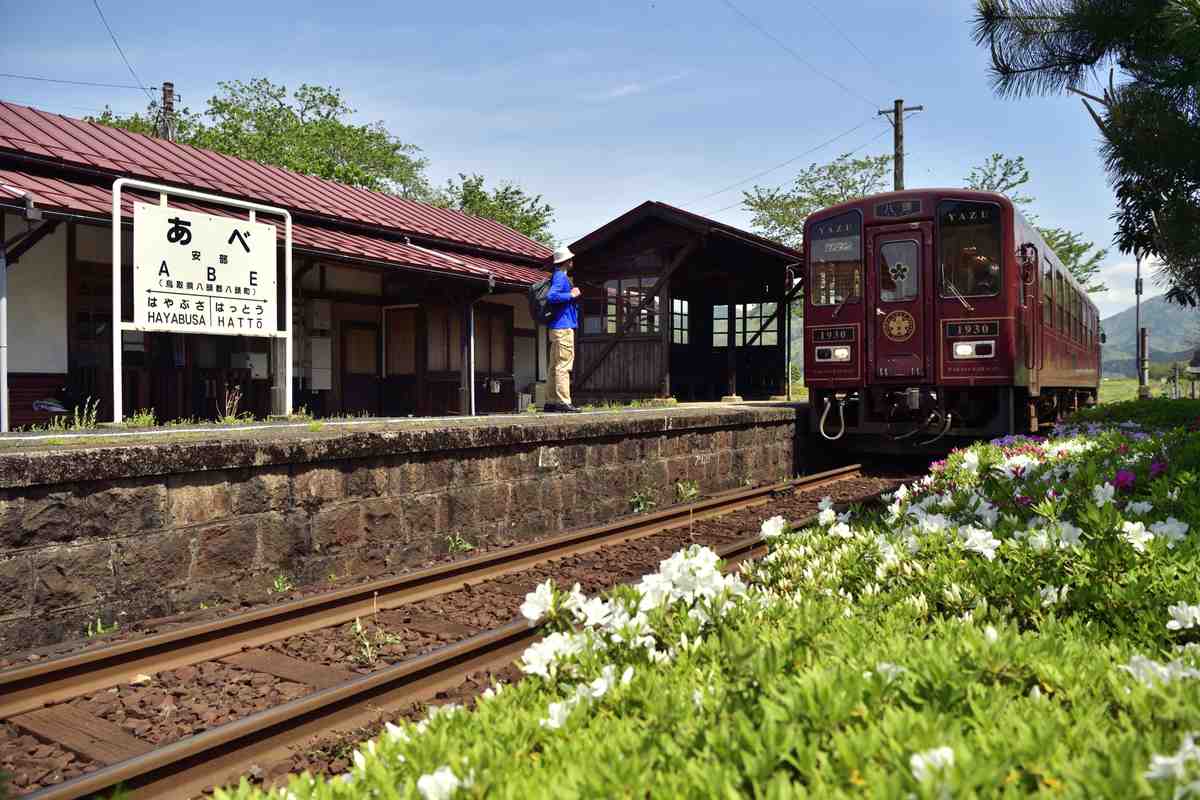
Abe Station’s platform made of three tiers of granite, in Yazu, Tottori Prefecture

11:58 JST, April 19, 2025
At Wakasa Railway in Tottori Prefecture, 23 facilities built around the time of its opening in 1930, such as wooden station buildings and masonry platforms, are registered as national tangible cultural properties. Riding this nostalgic railroad, I set out on a journey to explore the remnants of the Showa era (1926-89).
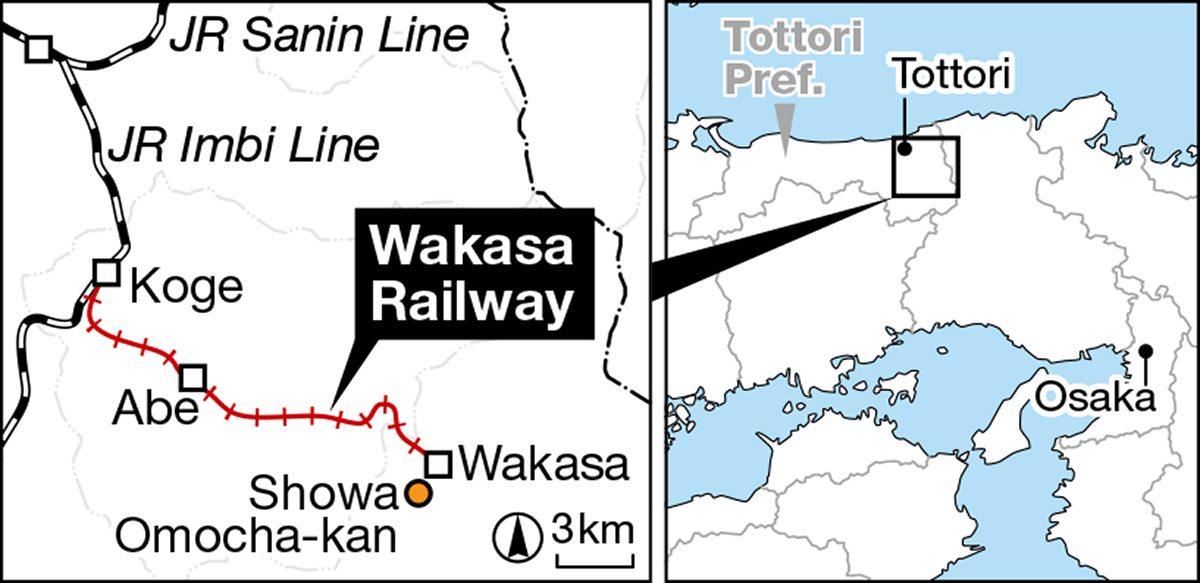
The railway runs on a 19.2-kilometer route from Koge Station, which is connected to the JR Imbi Line, to Wakasa Station. At Koge Station, I boarded the “Showa-go” train, which made its debut in 2018. The interior of the train is reminiscent of old coaches, with lots of wood used for the seats, floors and other parts of the train, livening up the atmosphere of the retro travel experience.
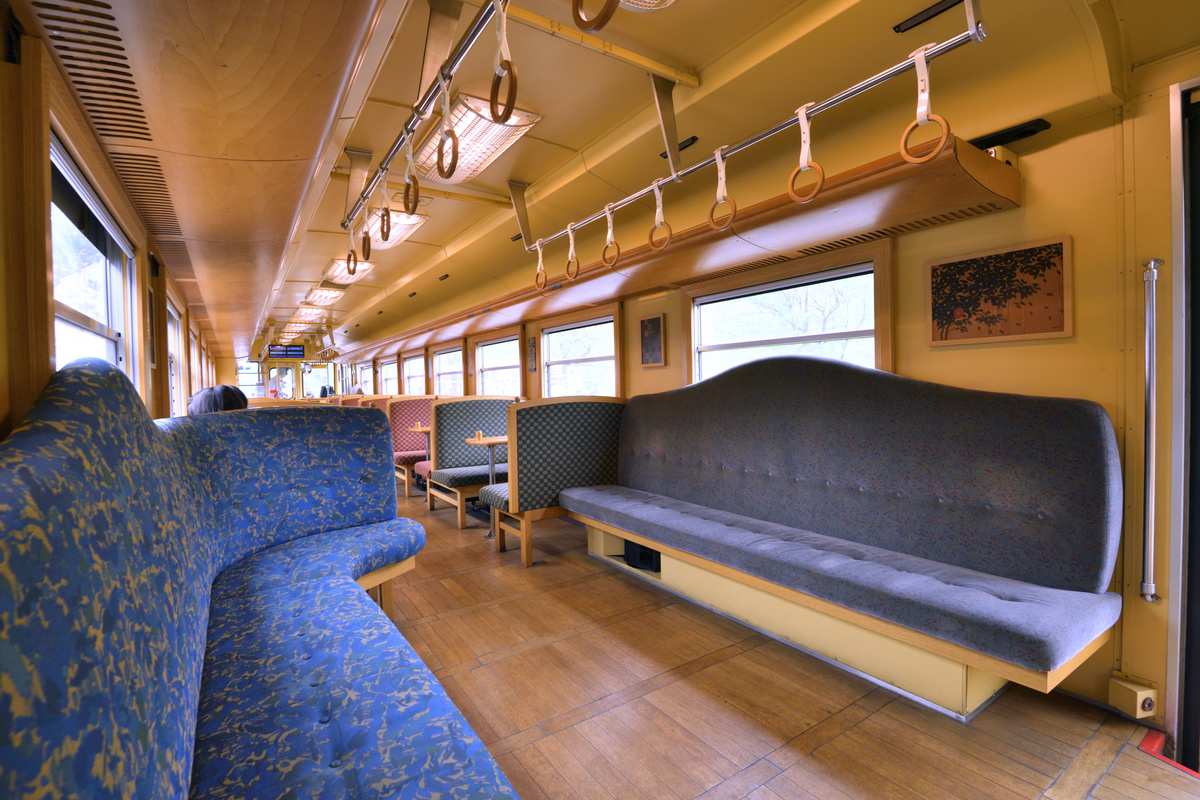
The interior of the “Showa-go” train is a fusion of craftsmanship and the latest technology.
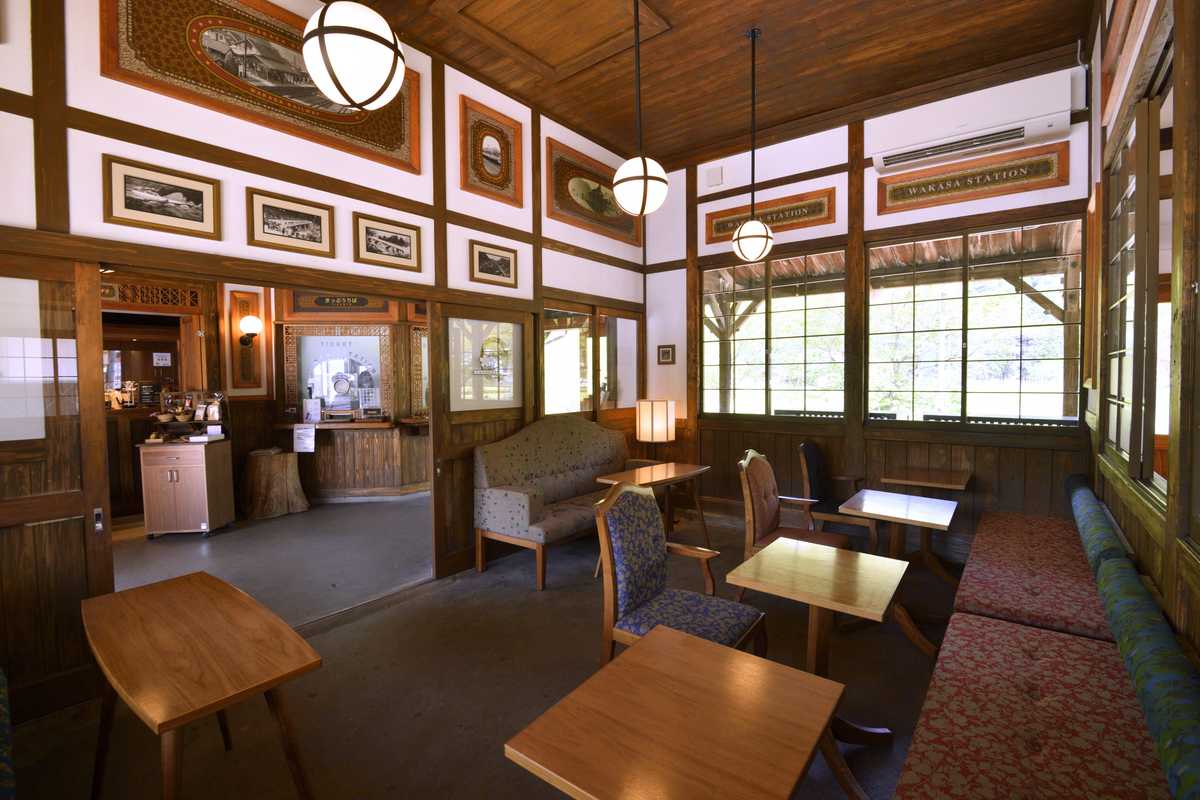
The waiting room at Wakasa Station, which has been remodeled to retain the atmosphere of the Showa era
The waiting room at Inabafunaoka Station, with its well-worn wooden benches, has a strong retro atmosphere. The neighboring Hayabusa Station also retains its original station building at the time of opening. The ticket gate and station counter at Abe Station also remain as they were when the station was built, as if time has stood still.
The train passes Hatto Station, where a conductor’s car is still seen, and Tampi Station, where the platform eaves are made of rails manufactured by the Carnegie Steel Corp. of the United States.
As I took in the views along with the Showa retro atmosphere, Wakasa Station came into view.
The tin board with the station name on the platform, the station building with its red tin roof and clapboard outer wall, a water tower for steam locomotives (SL) and a working SL still on display — all of these made me feel as if I had stepped into a station in the early 20th century.
“We would like to carefully preserve and manage the remaining assets from the Showa era, such as the station building, turntable, SL and water tower,” said Masahiko Yabe, the company’s senior managing director and head of the general affairs department.
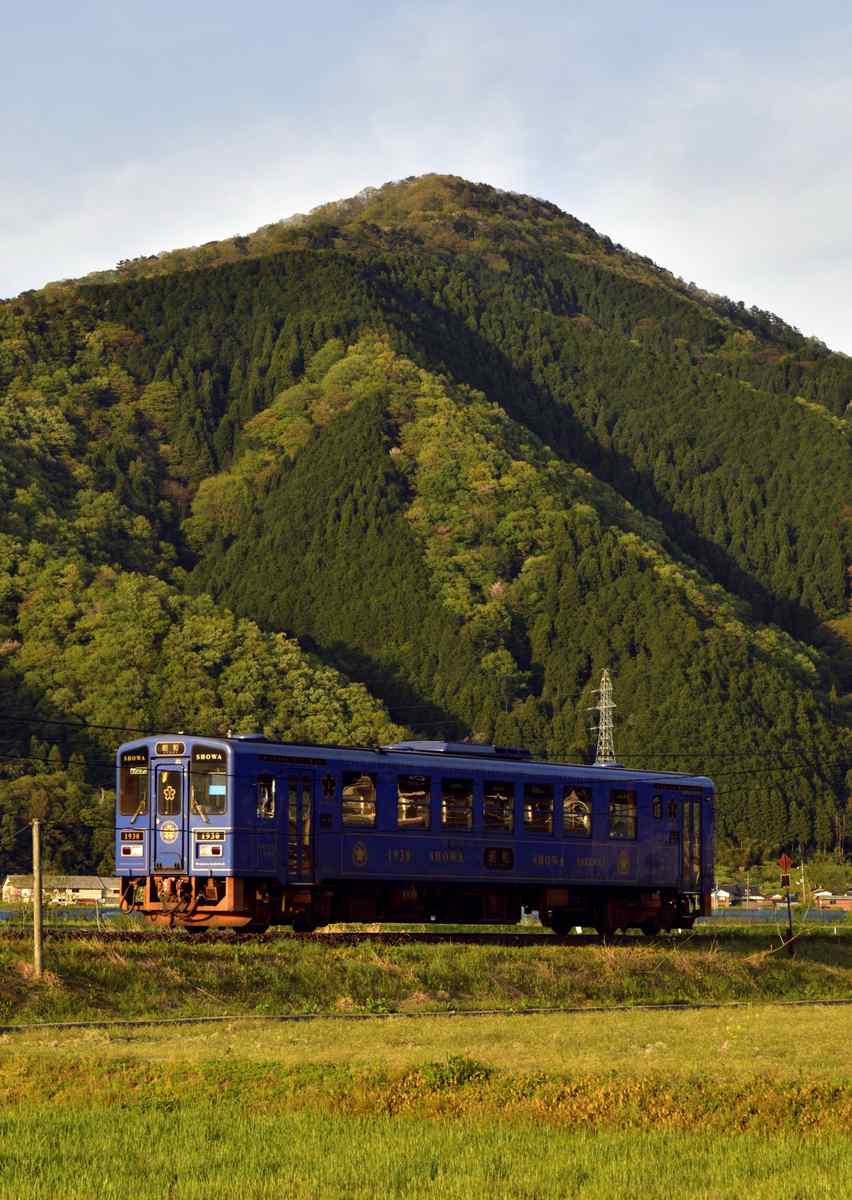
The blue “Showa-go” train travels through the tranquil countryside.
A Showa-era atmosphere is also felt in the town of Wakasa. Showa Omocha-kan (Showa toy museum) on Kariyadori Street is packed with old-time sweets and toys, just like a Showa-era penny candy store. I was filled with such a sense of nostalgia, feeling as if I really was back in the Showa era.
Showa Omocha-kan
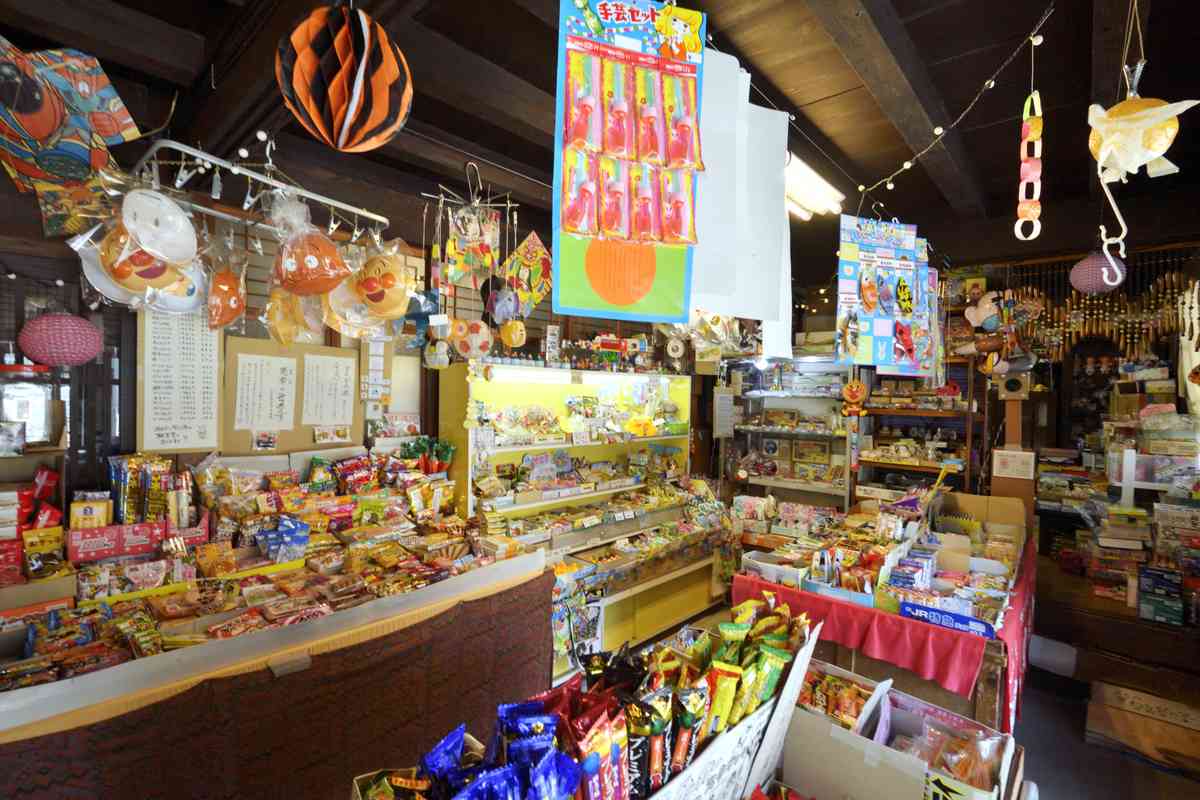
Showa Omocha-kan, where visitors can return to their childhood
An old private house was turned into a museum to re-create the feel of the Showa era. Old-time household items and toys are on display at the back of the first floor. Open 10:30 a.m. to 5:30 p.m., except from noon to 1 p.m. on weekdays. Closed on Tuesdays, Wednesdays and New Year’s holidays. The museum is a 5-minute walk from Wakasa Station.
***
Japan Tourism is presented in collaboration with Ryoko Yomiuri Publication, which publishes Ryoko Yomiuri, a monthly travel magazine. If you are interested in the original Japanese version of this story, click here.
"Features" POPULAR ARTICLE
-
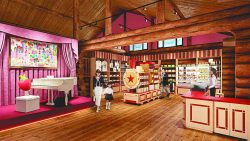
Sanrio to Open Museum in Yamanashi Pref. Dedicated to Founder, Exhibits Include Hello Kitty, Other Characters
-

Legendary Sushi Chef Jiro Ono Turns 100: ‘I Have No Regrets’
-
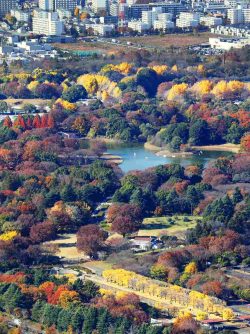
Autumn Foliage Surrounds Visitors to Tokyo’s Showa Kinen Park
-

My Daughter No Longer Speaks to Me, But I Want to See Her and My Grandchild
-

Kumamoto: Public Bath Refurbished as Library Where You Can Chat, Take Photos
JN ACCESS RANKING
-
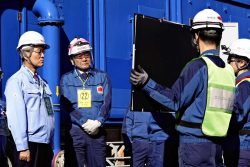
Keidanren Chairman Yoshinobu Tsutsui Visits Kashiwazaki-Kariwa Nuclear Power Plant; Inspects New Emergency Safety System
-

Imports of Rare Earths from China Facing Delays, May Be Caused by Deterioration of Japan-China Relations
-

University of Tokyo Professor Discusses Japanese Economic Security in Interview Ahead of Forum
-

Japan Pulls out of Vietnam Nuclear Project, Complicating Hanoi’s Power Plans
-

Govt Aims to Expand NISA Program Lineup, Abolish Age Restriction




